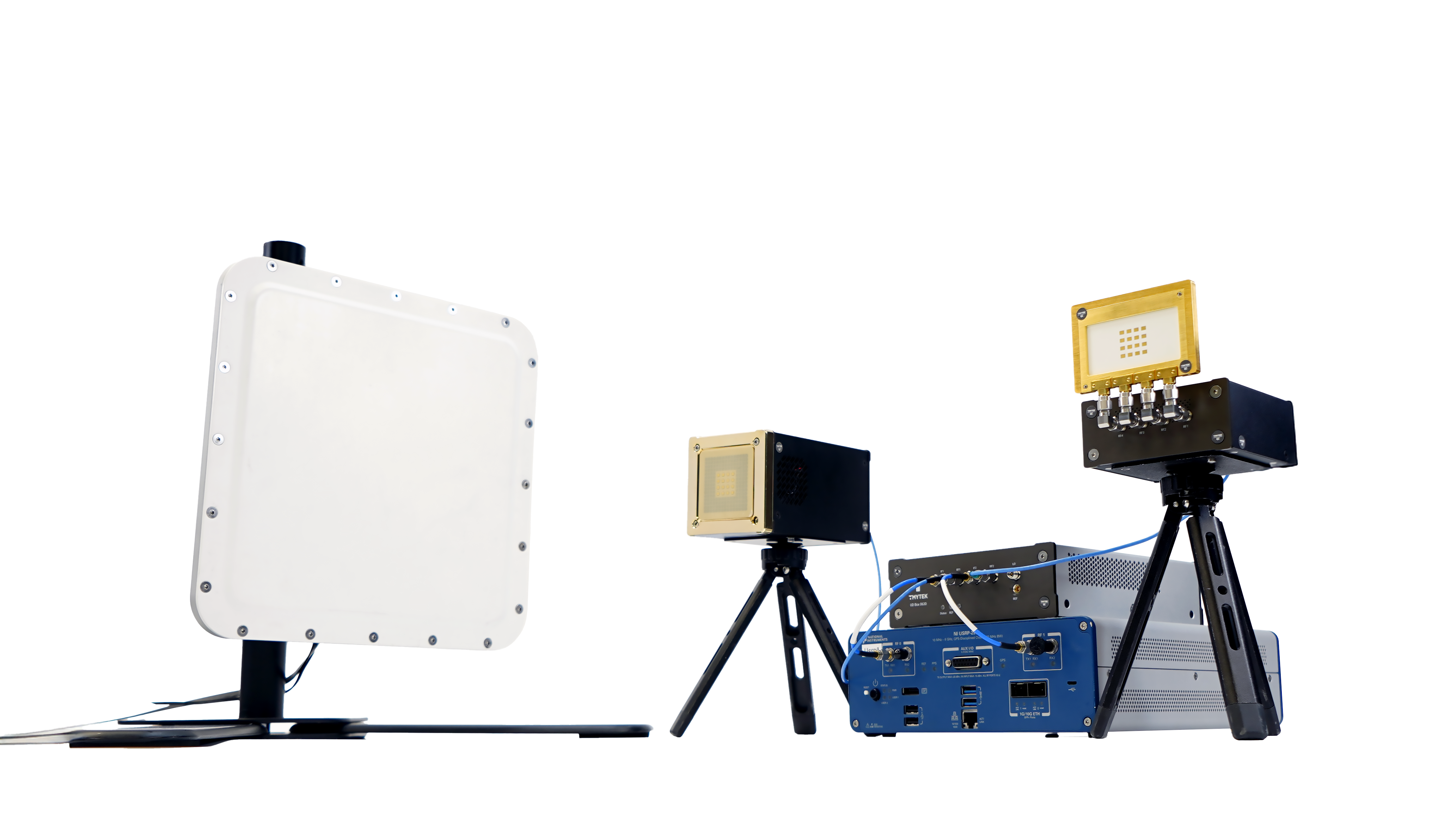What is mmW-Coverage
Planning the quantity and location of base stations are key factors in a successful deployment. mmW-Coverage solutions emulate gNB and UE with an SDR-based testbed, redistribute FR2 mmWave signals by reflectors to construct optimal coverage with reasonable cost.
mmW-SDR
Using an SDR-based gNB and UE is a powerful method to plan a deployment for a field. TMYTEK’s mmW-SDR testbed incorporates millimeter-wave technology and SDR for beamforming, beam tracking, and beam management in a network
Fast beam switching time
With a typical switching time of just 2 ms (Ethernet) or 2 μs (SPI Interface), our solution allows for rapid and accurate beamforming.
Fast beam steering time
Our typical T/R mode switching time is just 10 ns (GPIO), enabling quick and efficient transmission and reception.
Wide beam steering angle
TMYTEK’s 5G Beamformers offer 3D beamforming. The steering angle is ± 45° both vertically and horizontally.
XRifle Reflector
5G FR2 enables eMBB and URLLC with low latency and excellent reliability. However, mmWave faces significant propagation losses and can be blocked by obstacles, making it challenging to achieve optimal signal coverage at efficient costs. TMYTEK's XRifle Reflector enables users to customize EM signal distributions, cover dead zones, and create cold zones.

XRifle Dynamic RIS
The Dynamic Reconfigurable Intelligent Surface (RIS), engineered for the 28 GHz FR2 band, achieves reflective angles through precise control of its element switches. It demonstrates exceptional performance in high-frequency applications, boasting a remarkable 60 degree reflective angle range that facilitates versatile signal control. With a scanning range of ±60 degrees, this system exhibits extensive adaptability. And its 1024 units ensures robust signal transmission and can expand to 4096 units, enhancing the efficiency of signal coverage and reflection.
Seamless Beam Control
Effortlessly adjust beam angles.
Adaptive Reflection
Dynamically adapt reflection angles to meet application needs.
Versatile Deployment
Diverse deployment possibilities for passive reflectors and RIS, enhancing flexibility
6G Testbed + RIS
6G Testbed + RIS combines mmWave beamformers, frequency converters, and dynamic RIS for advanced 6G prototyping. Seamlessly integrates with SDRs like USRP to support beamforming, ISAC/JCAS, RIS-assisted comms, and real-world deployment.FR2/FR3 beamforming & frequency conversion Real-time RIS angle adjustment SDR-ready for 6G, NTN, ISAC/JCAS, mmWave

mmW-Coverage Use Case: Indoor
Electromagnetic surface (ES) patterns on interior glass or PCBs redistribute mmWave signals from different angles, enabling telecom and system integrators to quickly produce signal hot-zones and cold-zones, and simulate actual mmWave deployment.

mmW-Coverage Use Case: Extend Signal Cross Floors
The XRifle Reflector solves signal transmission challenges within commercial buildings by strategically extending signals bidirectionally between different floors through cable shafts. After the installation, the signal improved 30 dBm from -90 dBm to -60 dBm.
Explore how XRifle Reflectors extend the signal cross floors in this use case.

Experience XRifle Reflector
Experience XRifle Reflector in our 3D interactive demo room
Smart Deployment Simulation with XRifle Reflector.
mmW-Coverage Use Case: XRifle Dynamic RIS
Using the NI USRP to generate a signal source, the signal is transmitted via the UD Box 5G for upconversion, with the BBox One serving as the transmission terminal. It is transmitted in an over-the-air (OTA) manner to the XRifle reflector with a 30-degree incidence angle.
The signal is then reflected at 10-degrees towards the hybrid RIS, where it is received with a 0-degree incidence angle. Subsequently, it is further reflected at 50-degrees toward the BBox Lite receiving end. The signal is downconverted through the UD Box 5G and analyzed by the NI USRP to observe real-time EVM, spectrum, and constellation diagram changes.

Documents






Talk to Expert.
We’re here to help you find the best solution for your project.
Download Datasheet
Download XRifle Datasheet
Download Flyer
Testbed + RIS flyer
Download Use Case
Download Use Case


